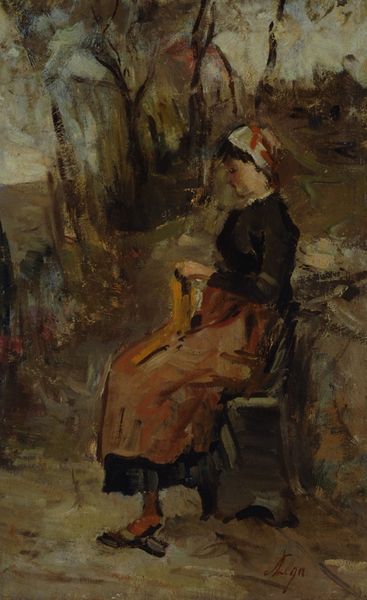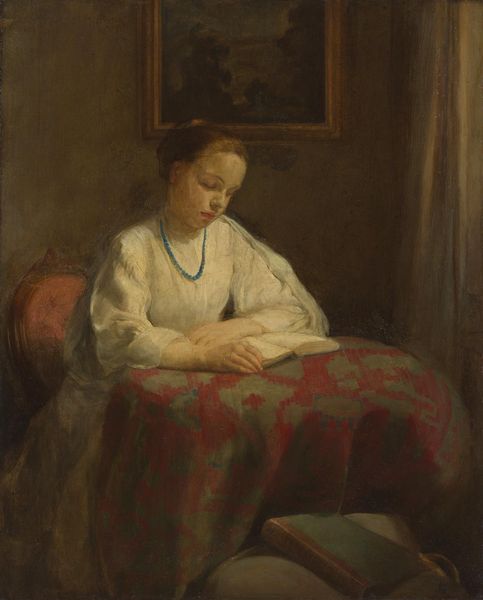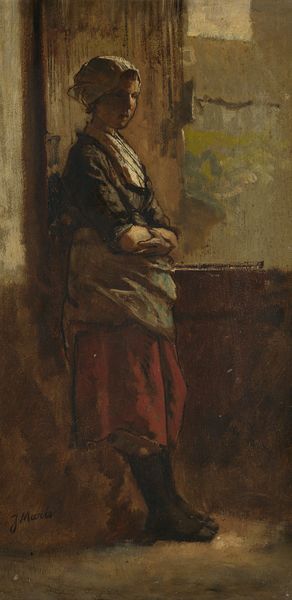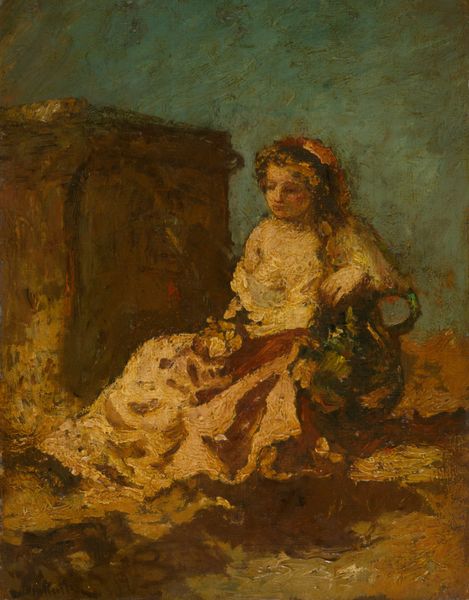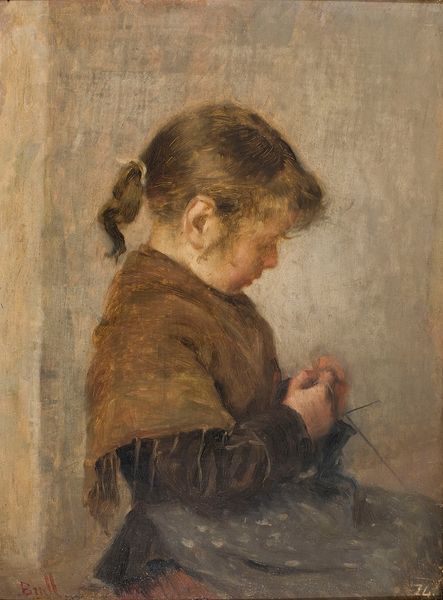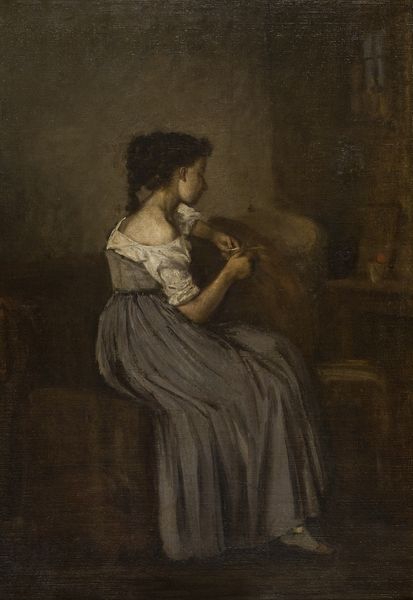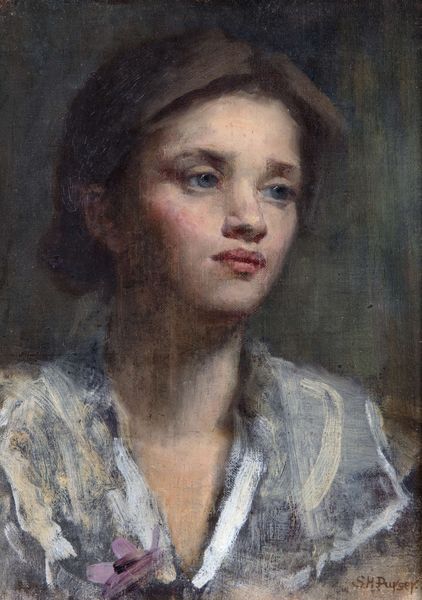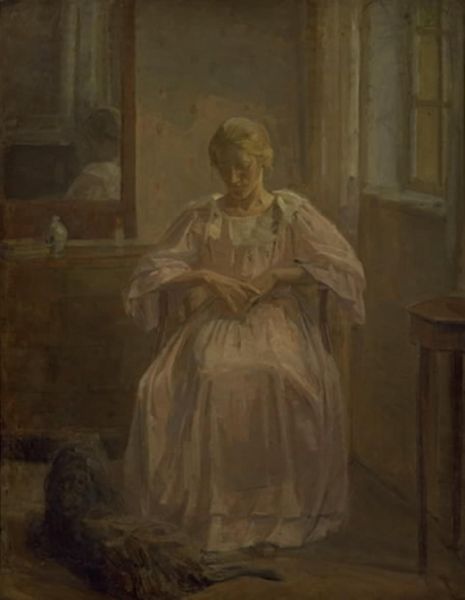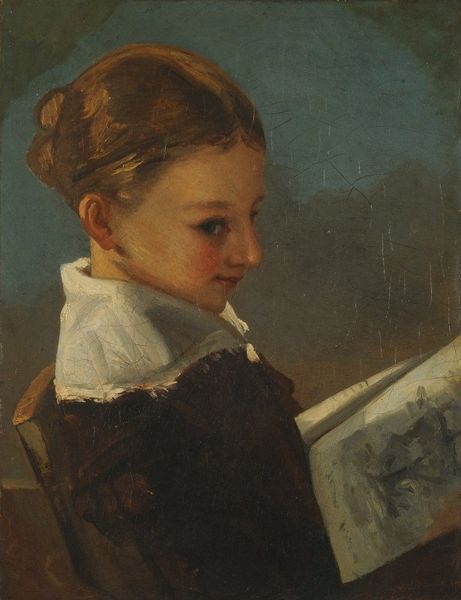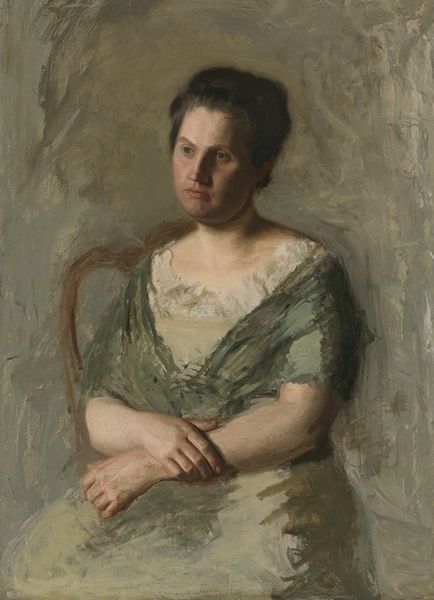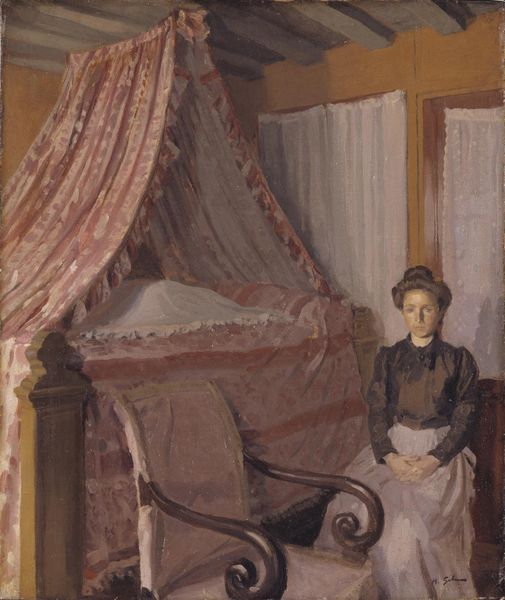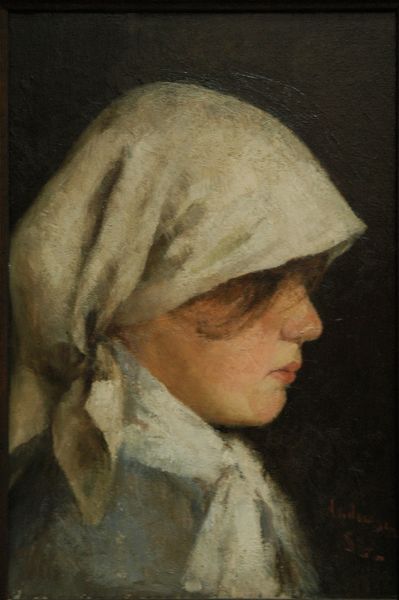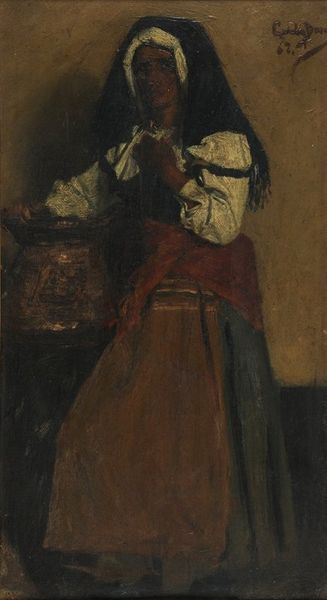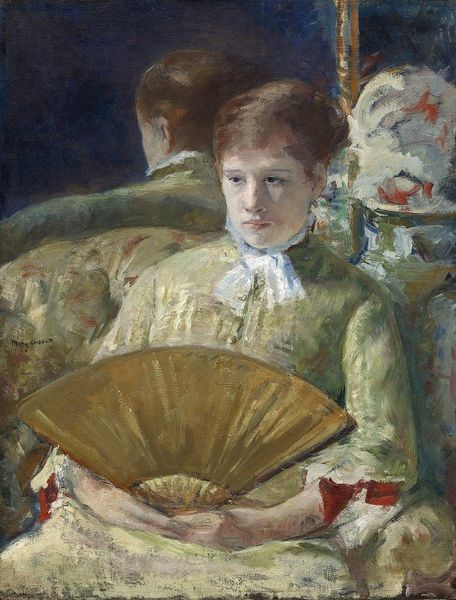
painting, oil-paint
#
painting
#
oil-paint
#
oil painting
#
genre-painting
#
realism
Dimensions: height 146 cm, width 79.8 cm, thickness 3 cm, height 154.6 cm, width 88.4 cm, depth 9.8 cm
Copyright: Rijks Museum: Open Domain
Editor: This is "Het arme kind," or "The Poor Child," an oil painting made sometime between 1880 and 1897 by Antonio Mancini. It’s currently at the Rijksmuseum. She just looks so forlorn and fragile standing there in such a stark room. What symbolic layers do you see embedded within this image? Curator: Indeed, the downcast gaze and bare feet immediately communicate vulnerability. But consider the shelf in the background. What do we make of those vials and bottles alongside the implication of absence and need? Are they remnants of a former prosperity, hints of aspiration, or a cold acknowledgement of social realities? Editor: That’s interesting. I was so focused on the girl herself. The objects up on the shelf almost look like… trophies, but also, maybe relics? What might the empty glass symbolize? Curator: The glass, depending on cultural context, is multivalent. It suggests fragility but also clarity, potential fullness, or devastating emptiness. In Victorian imagery, empty vessels were often associated with lost innocence. Does Mancini echo this symbolism? And how does this resonance shift when viewed through the lens of socio-economic critique, particularly the raw depictions of poverty common in Realism? Editor: So, are you saying Mancini is consciously layering social commentary with a commentary on…loss of innocence? It’s like the setting and the girl work together to form one coherent message. Curator: Precisely! Consider the broader language: the hay strewn on the floor, the girl's plain garments. The power lies in how Mancini merges traditional iconographic codes with a brutal depiction of everyday life, urging us to confront the uncomfortable truths lurking beneath the surface. It creates a visual vocabulary of disenfranchisement, echoed in so many representations of marginalized peoples through art history. What sticks with you the most about the painting? Editor: How loaded even the most seemingly simple details of this genre painting are. Thanks for showing me how symbols work over time to acquire all this power!
Comments
No comments
Be the first to comment and join the conversation on the ultimate creative platform.
